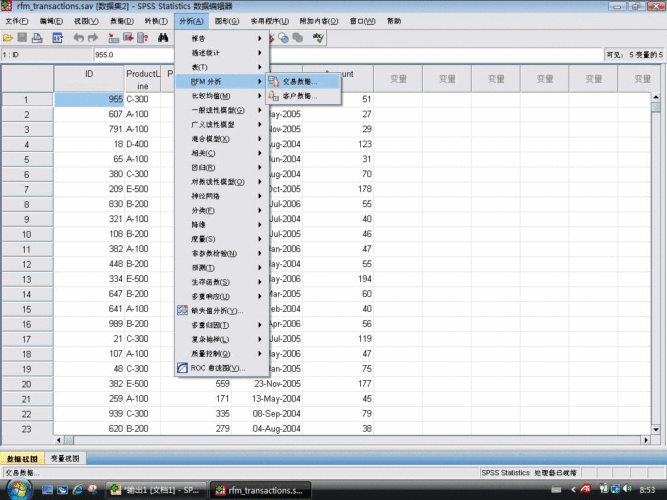Including data analysis in your digital branding is a smart way to stay on top of your audience and your content. With all of the helpful tools out there to help you collect data, you should be using what you find to the max.
How to Use Data Analysis to Grow Your Digital Brand
Data analysis is a great way to use free information to maximize your brand’s operations. By utilizing data analysis you will know where your audience is coming from, what content they like the best, and find out more about them individually. This isn’t a complicated process and can be part of your online routine.
We’ll show you five easy steps for making sure that you’re using data analysis to its fullest potential.
Step 1: Capitalize on Google Analytics and Search Console
Search Console and Google Analytics are part of Google’s marketing and data tools geared towards helping businesses grow using data analysis.
Google Analytics is a tool that helps you to analyze data from all touchpoints, including your website, app, or blog. Any time that your viewers interact with your business through any of these digital touchpoints, Google Analytics will gather data and report on how your viewers interact with your business and where you are the strongest.
Search Console shows you where your site ranks in a Google search. It can also provide extra information on your customers like where your site queries come from and how your products or services rank in a search.
These tools can help you to determine where your business needs to make changes to increase revenue, build brand awareness and customer loyalty, and encourage engagement. Both devices can provide critical insights into your popular content, customer demographics, digital traffic, and search queries.
Utilizing Google Analytics and Search Console are great budget-friendly options for managing your online presence. Implementing these tools in your digital branding will ensure that you don’t waste time on content that isn’t what your viewers are looking for. It will also keep you from wasting money on advertising in areas that don’t generate a viewer base.
SEE ALSO: How to Get Actionable Data from Google Analytics in 10 Minutes
Step 2: Develop a Database For Your Analytics and Data

Well thought out plans and decisions are usually made from gathered data. A database is a crucial aspect of daily operations for easily managed data.
If you already know how to use Microsoft Excel, then you can already create a basic database for your data. A database is simply a tool or application that is designed to manage large volumes of data from multiple sources. Microsoft Excel can be used to create a basic database. However, working with an expert in database development could be of a greater benefit to your brand.
A well-developed database will be necessary to store large amounts of data over a long period of time. This database is used for reference when looking at different analytics like demographics, audience, engagement, and sales. Having a fully-developed database where you can manage a large amount of data will help you take your brand to success by harnessing analytics.
When developing your database, you will need to consider the type of details you want to store on your viewers and the information that will be relevant to your brand later. You might want to create databases on sales reports and trends, client accounts, sales opportunities, or customer identification information for newsletters.
Step 3: Use Data Mining
Data mining involves collecting information about your viewers and target audience. Do this quickly with tools like Google Analytics and Search Console.
Creating a well-developed database will allow you to store all of your data for future reference and analysis.
There will always be more data to be collected and consistent updates to be made to your database. This is why it is so important for your brand to use data mining. This process is the way that your brand can examine and generate more information about the things related to your brand, and even your viewers.
Summarize Your Data
When put simply, data mining is simplifying and summarizing your data in a way that you can understand. This then allows you to infer things about specific data based on the patterns that emerge. Depending on the goals your brand has in mind, your data mining could take many different forms.
Data mining can be beneficial for your brand because it can help you to extract more pertinent information from your database. It can also tell you more about your viewers than you knew before. This will allow you to better curate your services for them.
You can use data mining when you’d like to discover new trends or in-depth information for your brand. You can also use data mining when you’re looking to obtain new viewers or retain your viewers. Just closely analyze your information to extract further data. This will allow you to segment your audience, target new viewers, and achieve brand-related goals.
Step 4: Extract Data From Queries
SQL, or Structured Query Language, is a term used by advanced data analysists and tech-savvy people. SQL is used when a brand has a large volume of data and would like to extract specific information from it using targeted queries or searches. In larger businesses, most employees have access to a database and can use SQL to find specific data. However, you might feel lost about the nature of the data you can extract using a SQL query.
The type of data you can find using a SQL query will be based on the values within your database. If you’re collecting information about your viewers, like their height, eye color, birthday, or shoe size, that information could be referenced as values which will be in certain categories in your database.
Define Your Data
Your data types will define the characteristics of the data stored in a database column. In a SQL, each of your table’s columns hold certain types of data. These could be text or numeric in form. Your information could range from data analysis of employee hours to age information. You can also extract specific information from this SQL about your viewers to simply the process of getting to know your target audience better.
Before you start working with SQL, it is important that you make sure that you understand what type of data you’re looking for. You should also know what information will be the most beneficial to your business.
Step 5: Analyze Your Data

Microsoft Excel is the simplest way you can analyze your data. Excel has a large number of functions and features that will allow you to fully analyze your data and determine what information you need for your brand operations. Using Excel is the perfect place to start if you’re new to using data analysis. This is because its a more user-friendly way of looking more closely at your data.
If you haven’t used Excel before, then it might feel a little confusing as a data analysis tool. However, Excel can extract different types of data for analysis.
With its analytics tool, you can search and merge data easily. It can also identify important relationships between the data and be analyzing hundreds of snippets of data. Plus this can happen in the same document. Additionally, you can rank, chart, and sort your data for quick reference and future data analysis.
Customize Your Analysis
Excel has many settings and functions. It also offers a simplified approach for brand owners who are only looking to collectively organize their data and viewer information in one application. This will provide conclusions about your viewers and brand. This will be critical when evaluating purchasing trends, increases or decrease in revenue, and relevant content.
Learning to use Excel specifically for data analysis can seem a little daunting. However, you can quickly become a pro in no time and be able to manage your businesses data with ease.
Whatever you draw from your data analysis should be carefully honed into your newsletter subscriber list. The information you find should also be used to reach your target audience. Finally, integrate your data into a new marketing campaign for more optimized results and ROI.
Final Thoughts
Data analysis may seem like another chore at first. However, it can actually create big changes for your brand and save you time. Imagine the frustration of developing a great ad for your target audience. Then you learn it’s not on a site where they’ll see it. Data analysis will take care of that for you! It will eliminate wasted time and money, and thus benefit your brand from the get-go. Eventually, you’ll have gathered enough data to analyze that it will bring more benefits. You’ll know exactly who your target audience is and what they want you to write. All you have to do is start gathering data!
What would you like to learn from data analysis?











